Countdown to Green theme by blindedcoon
Download: CountdownToGreen.p3t

(1 background)
Redirect to:

The #1 spot for Playstation themes!
Gran Turismo theme by Nova Mackenzie
Download: GranTurismo.p3t

(1 background)
Gran Turismo may refer to:
Subaru theme by Harry
Download: Subaru.p3t

(2 backgrounds)
 Logo since 2019 | |
 Headquarters | |
Native name | スバル |
|---|---|
| Company type | Division |
| Industry | Automotive |
| Predecessor | Nakajima Aircraft Company |
| Founded | 15 July 1953[1][2] |
| Founder | Kenji Kita Chikuhei Nakajima |
| Headquarters | , Japan |
Area served | Worldwide |
Key people | Atsushi Osaki (President, Representative Director & CEO) Tomomi Nakamura (Chairman & Director) |
| Products | Automobiles |
Production output | |
Number of employees | 16,961 (2022) |
| Parent | Subaru Corporation |
| Divisions | Subaru Tecnica International |
| Website | subaru.co.jp |
Subaru (スバル, /ˈsuːbəruː/ or /sʊˈbɑːruː/;[4][5] Japanese pronunciation: [ˈsɯbaɾɯ][6]) is the automobile manufacturing division of Japanese transportation conglomerate Subaru Corporation (formerly known as Fuji Heavy Industries), the twenty-first largest automaker by production worldwide in 2017.[7]
Subaru cars are known for their use of a boxer engine layout in most vehicles above 1,500 cc. The Symmetrical All Wheel Drive drive-train layout was introduced in 1972. Both became standard equipment for mid-size and smaller cars in most markets by 1996. The lone exception is the BRZ, introduced in 2012 via a partnership with Toyota, which pairs the boxer engine with rear-wheel-drive. Subaru also offers turbocharged versions of their passenger cars, such as the WRX, Legacy and Outback XT, Ascent, and formerly the Legacy GT and Forester XT.
In Western markets, Subaru vehicles have traditionally attracted a small but devoted core of buyers. The company's marketing targets those who desire its signature engine and drive train, all-wheel drive and rough-road capabilities, or affordable sports car designs.[8]
Subaru is the direct translation from Japanese for the Pleiades star cluster M45, or the "Seven Sisters" (one of whom tradition says is invisible – hence only six stars in the Subaru logo), which in turn inspires the logo and alludes to the companies that merged to create FHI.[9]
Fuji Heavy Industries started out as the Aircraft Research Laboratory in 1915, headed by Chikuhei Nakajima. In 1932, the company was reorganized as Nakajima Aircraft Company, Ltd and soon became a major manufacturer of aircraft for Japan during World War II. At the end of the Second World War, Nakajima Aircraft was again reorganized, this time as Fuji Sangyo Co, Ltd. In 1946, the company created the Fuji Rabbit, a motor scooter, with spare aircraft parts from the war.[10] In 1950, Fuji Sangyo was divided into 12 smaller corporations according to the Japanese government's 1950 anti-zaibatsu legislation, the Corporate Credit Rearrangement Act. Between 1953 and 1955, five of these corporations and a newly formed corporation decided to merge to form Fuji Heavy Industries. These companies were: Fuji Kogyo, a scooter manufacturer; coachbuilder Fuji Jidosha; engine manufacturer Omiya Fuji Kogyo; chassis builder Utsunomiya Sharyo and the Tokyo Fuji Sangyo trading company.[11]


Kenji Kita, CEO of Fuji Heavy Industries at the time, wanted the new company to be involved in car manufacturing and soon began plans for building a car with the development code-name P-1. Kita canvassed the company for suggestions about naming the P1, but none of the proposals were appealing enough. In the end he gave the company a Japanese name that he "had been cherishing in his heart": Subaru, which is the Japanese name for the Pleiades star cluster. The first Subaru car was named the Subaru 1500.[12] Only twenty were manufactured owing to multiple supply issues. Subsequently, the company designed and manufactured dozens of vehicles including the 1500 (1954), the tiny air-cooled 360 (1958), the Sambar (1961), and the 1000 (which saw the introduction of the Subaru boxer engine in 1965). [13]

Nissan acquired a 20.7% stake in Fuji Heavy Industries, Subaru's parent company, in 1968 during a period of government-ordered merging of the Japanese auto industry in order to improve competitiveness under the administration of Prime Minister Eisaku Satō. Nissan would utilize FHI's bus manufacturing capability and expertise for their Nissan Diesel line of buses. In turn many Subaru vehicles, even today, use parts from the Nissan manufacturing keiretsu. The Subaru automatic transmission, known as the 4EAT, is also used in the first generation Nissan Pathfinder. While under this arrangement with Nissan, Subaru introduced the R-2 (1969), the Rex and the Leone (1971), the BRAT (1978), Alcyone (1985), the Legacy (1989), the Impreza (1993) (and its WRX subtype), and the Forester (1997).
Upon Nissan's alliance with Renault, its stake in FHI was sold to General Motors in 1999. Troy Clarke of General Motors served as representative to Fuji Heavy Industries on their corporate board. During that time, Subaru introduced the Baja (2003), and the Tribeca (2005). The Subaru Forester was sold as a Chevrolet Forester in India in exchange for the Opel Zafira being sold as a Subaru Traviq in Japan. Also, the Chevrolet Borrego concept was presented in 2002, a crossover coupe/pickup truck being derived from the Japanese-market Legacy Turbo platform. During the brief General Motors period, a badge engineered Impreza was sold in the United States as the Saab 9-2X. An SUV (Subaru Tribeca/Saab 9-6X) was also planned[14][15] but the Saab version did not proceed, and styling was recycled in the 2008 Tribeca refresh.[16]
GM liquidated their holdings in FHI in 2005. Nearly all Saab-Subaru joint projects were dropped at that time, other than Subaru supplying parts for the Saab 9-2x.[17] Toyota Motors bought a little over 40% of GM's former FHI stock, amounting to 8.7% of FHI. (The rest of GM's shares went to a Fuji stock buy-back program.)[17] Toyota and Subaru have since collaborated on a number of projects, among them building the Toyota Camry in Subaru's Indiana U.S. plant beginning in April 2007.[18] Subaru introduced the Exiga in 2008.

Toyota increased their share of FHI to 16.5% in July 2008.[19] Subsequently, Toyota and Subaru jointly developed the Subaru BRZ, first sold in January 2012. Toyota sold the BRZ as the Scion FR-S until 2018, where it was renamed to the Toyota 86 due to the discontinuation of Scion in 2016. Around the time of Toyota's increased ownership, Subaru also declared that they would no longer develop their own Kei cars and trucks, instead selling rebadged products from Toyota's Daihatsu subsidiary. This also allowed Subaru, a small manufacturer, to focus on their core of boxer-engined family cars.[20] The last of Subaru's own kei vehicles to be built was the sixth generation Subaru Sambar, which was taken out of production in March 2012 after 54 years of continuous manufacturing in this category.
Some of the advertising slogans Subaru has used in the past include: "Inexpensive, and built to stay that way" (USA 1970s – early 1980s), "The World's Favourite Four Wheel Drive" (in the UK), "Plus on y pense, plus on a le goût de la conduire" (French: "The more you think about it, the more you want to drive it.") in French Quebec,[21] "We built our reputation by building a better car", "What to Drive", "The Beauty of All-Wheel Drive", "Driven by What's Inside", "Think, Feel, Drive", "Confidence in Motion" (USA early 2010s) and currently "Love. It's what makes Subaru, Subaru" in North America, "All 4 The Driver" in Australia, "Uncommon Engineering, Uncommon Stability, Uncommon Roadholding, Uncommon Sense" in the UK and "Technology that gives you Confidence in Motion" in Southeast Asia.[22]
In the 1990s, an ad firm hired by Subaru found the all-wheel-drive cars were popular among lesbians. The company started including subtle marketing to this demographic.[23][24]
According to Automotive Lease Guide, Subaru ranked second place in vehicles that have the highest overall predicted resale values among all industry and all luxury vehicles for MY 2009.[25] The awards are derived after carefully studying segment competition, historical vehicle performance and industry trends. According to a study done by J.D. Power and Associates for the 2008 Customer Retention Study, Subaru ranked at 50.5%, which was above the national average of 48%.[26]
Subaru launched an animation series Wish Upon the Pleiades Hōkago no Pleiades (放課後のプレアデス, Hōkago no Pureadesu, lit. 'After School Pleiades') developed jointly with Gainax. The 4-part mini episode series was released on YouTube on 1 February 2011. It featured a magical girl plot with Subaru as a leading protagonist.
Subaru's corporate headquarters are located in Ebisu, Tokyo.
Subaru is distinct from many of its Japanese competitors in that as of early 2016 it still made almost 75% of its cars sold internationally in Japan.[27] Subaru's facilities designated to automotive manufacturing are located in Ōta, Gunma Prefecture, consisting of four locations: Subaru-chō is where the Subaru BRZ/Toyota 86 is built; having been re-purposed from kei car production, Yajima Plant is where all current Subaru cars are built; Otakita Plant is where commercial kei trucks are built (originally a factory location of Nakajima Aircraft Company); and Oizumi Plant in Oizumi, Gunma Prefecture, is where engines and transmissions are built.[28]
Subaru's major overseas manufacturing facility is located in Lafayette, Indiana; the factory is called Subaru of Indiana Automotive, Inc. Due to continued sales growth in North American markets, vehicle production capacity at the Lafayette assembly plant is set to expand to 390,000 vehicles annually. Under the current strategic plan, Subaru will have a total production capacity of 1,026,000 vehicles per year at the end of 2016.[29]
In some Asian countries outside of Japan, Subaru vehicles, parts and accessories are supplied by Motor Image Group, a wholly owned subsidiary of Tan Chong Motor.[30][31]
Subaru has entered the Philippine operations started in 1996 under the Columbian Motors Philippines ownership but withdrew in 2000. Subaru models were temporarily sold in GM Autoworld dealerships from 2000 to 2005.[32] The brand re-entered the market in 2006 under the new management by Motor Image Pilipinas, Inc.[33] Subaru has seventeen dealerships in the country: Greenhills, Pasig, Manila Bay, Alabang, Davao, Cebu, Cagayan de Oro, Iloilo, Santa Rosa, Batangas, Bonifacio Global City, Taguig, General Santos, Cavite, Legazpi, Albay, Camarines Sur, Bacolod, and Pampanga.[34] Subaru has seen popularity in their SUV line-up in the market in recent years, with the Forester and the XV being one of their popular selling models.
Subaru cars has been exported to China since 2004.[35] In 2011, Subaru and Chinese automaker Chery intended to establish a 50-50 joint venture to produce Subaru vehicles in China. The plan was to establish a 30 billion yen facility in Dalian, Liaoning with initial annual capacity of 50,000 cars, that would later expand to 150,000 units. The initial joint venture proposal was rejected by Chinese authorities, as FHI affiliate Toyota already has two joint ventures in China, which is the maximum amount allowed.[36] Later in 2012, the proposal was rejected for the second time due to production overcapacity in the country.[37]
Subaru once had a presence in South Korea, established in 2009 in Yongsan, Seoul under Choi Seung-dal.[38] Sales started in April 2010 with the Legacy, Outback and Forester as the initial lineup for the South Korean market.[38] They were the fifth Japanese automobile manufacturer to enter after Toyota, Honda, Nissan and Mitsubishi.[39] According to the company, they delayed their entry due to market dominance by Hyundai and Kia.[39] By 2012, Subaru Korea announced that they would discontinue selling 2013 car models due to low sales.[40]
On 23 April 2019, Subaru officially opened its production plant in Lat Krabang, Bangkok, Thailand, the plant is a joint venture between Subaru Corporation and Hong Kong-listed Tan Chong International (TCIL), which holds a 74.9 percent stake.[41] The plant was formerly a Mitsubishi Fuso factory that was repurposed, and will supply Subaru vehicle to markets in Asia, including Australia and New Zealand. According to media interview with Glenn Tan, the plant will have a maximum capacity of 100,000 vehicles per year, and up to a maximum of 4 models to be manufactured. Current production in 2019 is planned for 6,000 vehicles for Forester model only.[42]
Indonesia has been supported by PT Plaza Auto Mega since February 2020.[43]
In 1974, Robert Edmiston was finance director at sports car manufacturer Jensen Motors. When the company went bankrupt, he used a £6,000 redundancy payout to set up International Motors,[citation needed] which acquired the UK franchise for Subaru and Isuzu. The Coleshill-based company is still the parent for Subaru in the UK.[44]
Subaru have operated in Australia since the mid-1950s with imports of the 360 & ff-1 Star 1000. Official operations began since 1973 & have multiple showrooms across the country.
Subaru of America (SOA) was established in 1968 in Bala Cynwyd, Pennsylvania, by Malcolm Bricklin and Harvey Lamm and relocated to Pennsauken, New Jersey, shortly thereafter. In 1986, SOA relocated to Cherry Hill, New Jersey, and Fuji Heavy Industries (now known as Subaru Corporation) acquired full ownership in 1990. In 2018, SOA relocated to a brand new headquarters in Camden, New Jersey.[45] SOA operates regional offices, zone offices and parts distribution centers throughout the United States. SOA also operates port facilities on both the West and East coasts.[46]
In 1989, Subaru and then-partner Isuzu opened a joint factory in Lafayette, Indiana, called Subaru-Isuzu Automotive, or SIA, which initially manufactured the Subaru Legacy and Isuzu Rodeo. In 2001 Isuzu sold their stake in the plant to Fuji Heavy Industries for $1 due to flagging sales and it was renamed Subaru of Indiana Automotive, Inc. SIA has been designated backyard wildlife habitat by the National Wildlife Federation and has achieved a zero-landfill production designation (the first automotive assembly plant in the United States to earn that designation).[46]
| Formula One World Championship career | |
|---|---|
| First entry | 1990 United States Grand Prix |
| Last entry | 1990 British Grand Prix |
| Races entered | 8 |
| Chassis | Coloni |

Subaru Rally Team Japan led by Noriyuki Koseki (founder of Subaru Tecnica International, STI) ran Subaru Leone coupé, sedan DL, RX (SRX) and RX Turbo in the World Rally Championship between 1980 and 1989. Drivers for individual rallies included Ari Vatanen, Per Eklund, Shekhar Mehta, Mike Kirkland, Possum Bourne and Harald Demut. Mike Kirkland finished 6th overall and won the A Group at the 1986 Safari Rally. That year Subaru was one of the only manufacturers combining 4WD and turbo after Audi's successful quattro system had been introduced in 1980, but Audi withdrew from the WRC after safety concerns and Ford's serious accident early in the 1986 season. Subaru changed the rally model to Legacy RS for the 1990–1992 period and took part in the first complete season in the World Rally Championship with the same model in 1993.
Modified versions of the Impreza WRX and WRX STi have been competing successfully in rallying. Drivers Colin McRae (1995), Richard Burns (2001) and Petter Solberg (2003) have won World Rally Championship drivers' titles with the Subaru World Rally Team and Subaru took the manufacturers' title three years in a row from 1995 to 1997. Subaru's World Rally Championship cars are prepared and run by Prodrive, the highly successful British motorsport team. Several endurance records were set in the early and mid-nineties by the Subaru Legacy. The Subaru Justy also holds the world record for the fastest sub 1.0L car without a turbo: 123.224 mph average, it was set in 1989.[47]
Subaru was briefly involved in Formula One circuit racing when it bought a controlling interest in the tiny Italian Coloni team for the 1990 season. The Coloni 3B's 12-cylinder engine was badged as a Subaru and shared the boxer layout with the company's own engines, but was an existing design built by Italian firm Motori Moderni. The cars were overweight and underpowered and the partnership broke down before the season finished.[48] With the rise of rally racing and the Import scene in the US, the introduction of the highly anticipated Subaru Impreza WRX in 2001 was successful in bringing high-performance AWD compact cars into the sports car mainstream. Subaru supplied a factory-backed team, Subaru Rally Team USA for Rally America and won the driver's title six times, most recently in 2011 with David Higgins.[49] Grassroots Motorsports awarded Subaru with the Editors' Choice Award in 2002.[full citation needed]
Since 2005, Cusco Racing have entered an Impreza and a BRZ in the Super GT championship. In 2008, the Impreza was the first 4-door and first 4WD vehicle to win a race.
Starting in 2006, Subaru of America (SOA), as the official distributor of Subaru vehicles in the United States participates in the Subaru Road Racing Team (SRRT) with a Subaru Legacy 2.5 GT Spec-B in the Grand-Am Street Tuner class. In 2010, SRRT campaigns a Subaru Impreza WRX STI in the Grand Sport class.[50] In 2011, SRRT switched from the hatchback to a 2011 Subaru Impreza WRX STI sedan.
On 16 December 2008, it was announced that Subaru would no longer be competing in the World Rally Championships.[51] The decision was made by Subaru's parent company, Fuji Heavy Industries (FHI), partly as a result of the economic downturn but also because it was felt Subaru had achieved its sporting and marketing objectives. Ikuo Mori denied that alterations to the WRC technical regulations in 2010 or a rumored deterioration in the working relationship with Prodrive had any impact on the decision. He also said that the possibility of a Subaru car back in the top category of WRC in the future is not zero, but for this moment there can be no assumption of a comeback.[52]
In 2011, Mark Higgins used a stock Impreza to set a lap record at the Isle of Man TT course.[53] In 2016, Higgins again broke the record in a modified WRX STI.[54]
On 4 May 2012, Subaru Rally Tea
Charger theme by Albert M.
Download: Charger_Theme.p3t

(1 background)
Charger or Chargers may refer to:
Formula One theme by Louxx
Download: FormulaOne.p3t

(3 backgrounds)
 Formula One logo since 2018 | |
| Category | Open-wheel single-seater Formula auto racing |
|---|---|
| Country | International |
| Inaugural season | 1950 |
| Drivers | 20 |
| Teams | 10 |
| Chassis manufacturers | 10 |
| Engine manufacturers | |
| Tyre suppliers | Pirelli |
| Drivers' champion | (Red Bull Racing-Honda RBPT) |
| Constructors' champion | |
| Official website | www |
| Formula One |
|---|
Formula One, commonly known as Formula 1 or F1, is the highest class of international racing for open-wheel single-seater formula racing cars sanctioned by the Fédération Internationale de l'Automobile (FIA). The FIA Formula One World Championship has been one of the world's premier forms of racing since its inaugural running in 1950. The word formula in the name refers to the set of rules all participants' cars must follow. A Formula One season consists of a series of races, known as Grands Prix. Grands Prix take place in multiple countries and continents on either purpose-built circuits or closed public roads.
A point-system is used at Grands Prix to determine two annual World Championships: one for the drivers, and one for the constructors (the teams). Each driver must hold a valid Super Licence, the highest class of racing licence the FIA issues, and the races must be held on grade one tracks, the highest grade rating the FIA issues for tracks.
Formula One cars are the world's fastest regulated road-course racing cars, owing to very high cornering speeds achieved by generating large amounts of aerodynamic downforce. Much of this downforce is generated by front and rear wings, which have the side effect of causing severe turbulence behind each car. The turbulence reduces the downforce the cars following directly behind generate, making it hard to overtake. Major changes made to the cars for the 2022 season have resulted in greater use of ground effect aerodynamics and modified wings to reduce the turbulence behind the cars, with the goal of making overtaking easier.[1] The cars depend on electronics, aerodynamics, suspension, and tyres. Traction control, launch control, and automatic shifting, and other electronic driving aids were first banned in 1994. They were briefly reintroduced in 2001, and have more recently been banned since 2004 and 2008, respectively.[2]
With the average annual cost of running a team—designing, building, and maintaining cars, pay, transport—at approximately £220,000,000 (or $265,000,000),[3] Formula One's financial and political battles are widely reported. The Formula One Group is owned by Liberty Media, which acquired it in 2017 from private-equity firm CVC Capital Partners for £6.4 billion ($8 billion).[4][5]
Formula One originated from the World Manufacturers' Championship (1925–1930) and European Drivers' Championship (1931–1939). The formula is a set of rules that all participants' cars must follow. Formula One was a formula agreed upon in 1946 to officially become effective in 1947. The first Grand Prix in accordance with the new regulations was the 1946 Turin Grand Prix, anticipating the formula's official start.[citation needed] Before World War II, a number of Grand Prix racing organisations made suggestions for a new championship to replace the European Championship, but due to the suspension of racing during the conflict, the new International Formula for cars did not become formalised until 1946, to become effective in 1947. The new World Championship was instituted to commence in 1950.[citation needed]
The first world championship race, the 1950 British Grand Prix, took place at Silverstone Circuit in the United Kingdom on 13 May 1950.[6] Giuseppe Farina, competing for Alfa Romeo, won the first Drivers' World Championship, narrowly defeating his teammate Juan Manuel Fangio. Fangio won the championship in 1951, 1954, 1955, 1956, and 1957.[7] This set the record for the most World Championships won by a single driver, a record that stood for 46 years until Michael Schumacher won his sixth championship in 2003.[7]
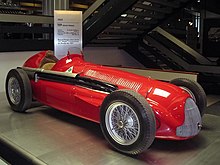
A Constructors' Championship was added in the 1958 season. Stirling Moss, despite being regarded as one of the greatest Formula One drivers in the 1950s and 1960s, never won the Formula One championship.[8] Between 1955 and 1961, Moss finished second in the championship four times and third the other three times.[9][10] Fangio won 24 of the 52 races he entered—still the record for the highest Formula One winning percentage by an individual driver.[11] National championships existed in South Africa and the UK in the 1960s and 1970s. Promoters held non-championship Formula One events for many years. Due to the increasing cost of competition, the last of these was held in 1983.[12]
This era featured teams managed by road-car manufacturers, such as Alfa Romeo, Ferrari, Mercedes-Benz and Maserati. The first seasons featured prewar cars like Alfa Romeo's 158, which were front-engined, with narrow tyres and 1.5-litre supercharged or 4.5-litre naturally aspirated engines. The 1952 and 1953 seasons were run to Formula Two regulations, for smaller, less powerful cars, due to concerns over the dearth of Formula One cars.[13][14] When a new Formula One formula for engines limited to 2.5 litres was reinstated for the 1954 world championship, Mercedes-Benz introduced its W196, which featured things never seen on Formula One cars before, such as desmodromic valves, fuel injection, and enclosed streamlined bodywork. Mercedes drivers won the championship for the next two years, before the team withdrew from all motorsport competitions due to the 1955 Le Mans disaster.[15]

The first major technological development in the sport was Bugatti's introduction of mid-engined cars. Jack Brabham, the world champion in 1959, 1960, and 1966, soon proved the mid-engine's superiority over all other engine positions. By 1961 all teams had switched to mid-engined cars. The Ferguson P99, a four-wheel drive design, was the last front-engined Formula One car to enter a world championship race. It entered the 1961 British Grand Prix, the only front-engined car to compete that year.[16]
During 1962, Lotus introduced a car with an aluminium-sheet monocoque chassis instead of the traditional space-frame design. This proved to be the greatest technological breakthrough since the introduction of mid-engined cars.
In 1968, sponsorship was introduced to the sport. Team Gunston became the first team to run cigarette sponsorship on its Brabham cars, which privately entered in orange, brown and gold colours of Gunston cigarettes in the 1968 South African Grand Prix on 1 January 1968.[17] Five months later, the first works team, Lotus, followed this example when it entered its cars painted in the red, gold, and white colours of the Imperial Tobacco's Gold Leaf livery at the 1968 Spanish Grand Prix.
Aerodynamic downforce slowly gained importance in car design with the appearance of aerofoils during the 1968 season. In the late 1970s, Lotus introduced ground-effect aerodynamics, previously used on Jim Hall's Chaparral 2J in 1970, that provided enormous downforce and greatly increased cornering speeds. The aerodynamic forces pressing the cars to the track were up to five times the car's weight. As a result, extremely stiff springs were needed to maintain a constant ride height, leaving the suspension virtually solid. This meant that the drivers depended entirely on the tyres for any small amount of cushioning of the car and driver from irregularities of the road surface.[18]
Beginning in the 1970s, Bernie Ecclestone rearranged the management of Formula One's commercial rights; he is widely credited with transforming the sport into the multibillion-dollar business it now is.[19][20] When Ecclestone bought the Brabham team during 1971, he gained a seat on the Formula One Constructors' Association, and in 1978, he became its president.[21] Previously, the circuit owners controlled the income of the teams and negotiated with each individually; Ecclestone persuaded the teams to "hunt as a pack" through FOCA.[20] He offered Formula One to circuit owners as a package they could take or leave. In return for the package, almost all that was required was to surrender trackside advertising.[19]
The formation of the Fédération Internationale du Sport Automobile (FISA) in 1979 set off the FISA–FOCA war, during which FISA and its president Jean-Marie Balestre argued repeatedly with FOCA over television revenues and technical regulations.[22] The Guardian said that Ecclestone and Max Mosley "used [FOCA] to wage a guerrilla war with a very long-term aim in view". FOCA threatened to establish a rival series and boycotted a Grand Prix, and FISA withdrew its sanction from races.[19] The result was the 1981 Concorde Agreement, which guaranteed technical stability, as teams were to be given reasonable notice of new regulations.[23] Although FISA asserted its right to the TV revenues, it gave FOCA the administration of those rights.[24]
FISA imposed a ban on ground-effect aerodynamics during 1983.[25] But by then, turbocharged engines, which Renault had pioneered in 1977, were producing over 520 kW (700 bhp) and were essential to be competitive. By 1986, a BMW turbocharged engine achieved a flash reading of 5.5 bar (80 psi) pressure, estimated[who?] to be over 970 kW (1,300 bhp) in qualifying for the Italian Grand Prix. The next year, power in race trim reached around 820 kW (1,100 bhp), with boost pressure limited to only 4.0 bar.[26] These cars were the most powerful open-wheel circuit racing cars ever. To reduce engine power output and thus speeds, the FIA limited fuel tank capacity in 1984, and boost pressures in 1988, before banning turbocharged engines completely in 1989.[27]
The development of electronic driver aids began in the 1980s. Lotus began to develop a system of active suspension, which first appeared during 1983 on the Lotus 92.[28] By 1987, this system had been perfected and was driven to victory by Ayrton Senna in the Monaco Grand Prix that year. In the early 1990s, other teams followed suit and semi-automatic gearboxes and traction control were a natural progression. The FIA, due to complaints that technology was determining races' outcomes more than driver skill, banned many such aids for the 1994 season. This resulted in cars that previously depended on electronic aids becoming very "twitchy" and difficult to drive. Observers felt the ban on driver aids was in name only, as they "proved difficult to police effectively".[29]
The teams signed a second Concorde Agreement in 1992 and a third in 1997.[30]
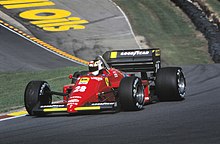
On the track, the McLaren and Williams teams dominated the 1980s and 1990s. Brabham was also competitive during the early 1980s, winning two Drivers' Championships with Nelson Piquet. Powered by Porsche, Honda, and Mercedes-Benz, McLaren won 16 championships (seven constructors' and nine drivers') in that period, while Williams used engines from Ford, Honda, and Renault to also win 16 titles (nine constructors' and seven drivers'). The rivalry between racers Ayrton Senna and Alain Prost became F1's central focus during 1988 and continued until Prost retired at the end of 1993. Senna died at the 1994 San Marino Grand Prix after crashing into a wall on the exit of the notorious curve Tamburello. The FIA worked to improve the sport's safety standards since that weekend, during which Roland Ratzenberger also died in an accident during Saturday qualifying. No driver died of injuries sustained on the track at the wheel of a Formula One car for 20 years until the 2014 Japanese Grand Prix, where Jules Bianchi collided with a recovery vehicle after aquaplaning off the circuit, dying nine months later from his injuries. Since 1994, three track marshals have died, one at the 2000 Italian Grand Prix,[31] one at the
Formula 1 theme by Bimmer3 Download: Formula1_2.p3t Redirect to: Lamborghini theme by linkin777 Download: Lamborghini.p3t
Automobili Lamborghini S.p.A. (Italian: [autoˈmɔːbili lamborˈɡiːni]) is an Italian manufacturer of luxury sports cars and SUVs based in Sant'Agata Bolognese. The company is owned by the Volkswagen Group through its subsidiary Audi.
Ferruccio Lamborghini (1916–1993), an Italian manufacturing magnate, founded Automobili Ferruccio Lamborghini S.p.A. in 1963 to compete with Ferrari. The company was noted for using a rear mid-engine, rear-wheel drive layout. Lamborghini grew rapidly during its first decade, but sales plunged in the wake of the 1973 worldwide financial downturn and the oil crisis. The firm's ownership changed three times after 1973, including a bankruptcy in 1978. American Chrysler Corporation took control of Lamborghini in 1987 and sold it to Malaysian investment group Mycom Setdco and Indonesian group V'Power Corporation in 1994. In 1998, Mycom Setdco and V'Power sold Lamborghini to the Volkswagen Group where it was placed under the control of the group's Audi division.
New products and model lines were introduced to the brand's portfolio and brought to the market and saw an increased productivity for the brand. In the late 2000s, during the worldwide financial crisis and the subsequent economic crisis, Lamborghini's sales saw a drop of nearly 50 per cent.
Lamborghini currently produces the V10-powered Huracán, Urus SUV powered by a twin-turbo V8 engine, and will produce the Revuelto, a V12/electric hybrid, as of 2024. In addition, the company produces V12 engines for offshore powerboat racing.
Lamborghini Trattori, founded in 1948 by Ferruccio Lamborghini, is headquartered in Pieve di Cento, Italy, and continues to produce tractors. Since 1973, Lamborghini Trattori has been a separate entity from the automobile manufacturer.
Manufacturing magnate Italian Ferruccio Lamborghini founded the company in 1963 with the objective of producing a refined grand touring car to compete with offerings from established marques such as Ferrari. The company's first models, such as the 350 GT, were released in the mid-1960s. Lamborghini was noted for the 1966 Miura sports coupé, which used a rear mid-engine, rear-wheel drive layout.
Lamborghini grew rapidly during its first ten years, but sales fell in the wake of the 1973 worldwide financial downturn and the oil crisis. Ferruccio Lamborghini sold the company to Georges-Henri Rossetti and René Leimer and retired in 1974. The company went bankrupt in 1978, and was placed in the receivership of brothers Jean-Claude and Patrick Mimran in 1980. The Mimrans purchased the company out of receivership by 1984 and invested heavily in its expansion. Under the Mimrans' management, Lamborghini's model line was expanded from the Countach to include the Jalpa sports car and the LM002 high-performance off-road vehicle.
The Mimrans sold Lamborghini to the Chrysler Corporation in 1987. After replacing the Countach with the Diablo and discontinuing the Jalpa and the LM002, Chrysler sold Lamborghini to Malaysian investment group Mycom Setdco and Indonesian group V'Power Corporation in 1994. In 1998, Mycom Setdco and V'Power sold Lamborghini to the Volkswagen Group where it was placed under the control of the group's Audi division. New products and model lines were introduced to the brand's portfolio and brought to the market and saw an increased productivity for the brand Lamborghini. In the late 2000s, during the worldwide financial crisis and the subsequent economic crisis, Lamborghini's sales saw a drop of nearly 50 per cent.
In 2021, the CEO of Lamborghini said that by 2024 all its models will be hybrid.[5]
As of the 2018 model year, Lamborghini's automobile product range consists of three model lines, two of which are mid-engine two-seat sports cars while the third one is a front engined, all-wheel drive SUV.[6]
Production of the new Revuelto began in mid-2023 and it will be delivered in late 2023 as a 2024 model. The car will be powered by a 6.5L naturally aspirated V12 and three magnetic motors for a combined power output of 1,001 hp (1,015 PS).[7][8]
The V10-powered Huracán line currently includes the all-wheel-drive LP 610-4, the low cost rear-wheel-drive LP 580-2 and the powerful track oriented LP 640-4 Performante, each in coupé and Spyder (convertible) versions.[9]
With the intention of doubling its sales volume by 2019, Lamborghini also added an SUV named Urus in its line-up which is powered by a twin-turbo V8 engine and utilises a front engine, all-wheel drive layout.[10][11]
Motori Marini Lamborghini produces a large V12 marine engine block for use in World Offshore Series Class 1 powerboats. A Lamborghini branded marine engine displaces approximately 8,171 cc (8.2 L) and outputs approximately 940 hp (700 kW).[12]
In the mid-1980s, Lamborghini produced a limited-production run of a 1,000 cc (61.0 cu in) sports motorcycle. UK weekly newspaper Motor Cycle News reported in 1994—when featuring an example available through an Essex motorcycle retailer—that 24 examples were produced with a Lamborghini alloy frame having adjustable steering head angle, Kawasaki GPz1000RX engine/transmission unit, Ceriani front forks and Marvic wheels. The bodywork was plastic and fully integrated with front fairing merged into fuel tank and seat cover ending in a rear tail-fairing. The motorcycles were designed by Lamborghini stylists and produced by French business Boxer Bikes.[13]
Lamborghini licenses its brand to manufacturers that produce a variety of Lamborghini-branded consumer goods including scale models, clothing, accessories, bags, electronics[14] and laptop computers.[15]
Lamborghini Motorsport Division Squadra Corse produces GT3 cars and cars for their Super Trofeo events based on the Gallardo and Huracán. Apart from them, the Squadra Corse builds cars upon customer request.
These cars were built by Squadra Corse upon customer request.
The Super Trofeo is a series of Motorsport events held by Squadra corse using their Super Trofeo model vehicles (currently the Huracán Super Trofeo EVO) which are racing versions of the road-approved models (Huracán and Gallardo models).
The Super Trofeo events are held in three different series, in three continents: America, Asia and Europe. Many private race team participate each of these events.
Every series consists of six rounds, each of which feature free practice sessions, qualifying and two races lasting 50 minutes each. There are four categories of drivers: Pro, Pro-Am, Am and Lamborghini Cup. The season ends in the Lamborghini Super Trofeo World Final.[16]
The Lamborghini GT3 is a series of Motorsport events held by The Squadra Corse using Huracán GT3 cars that comply with the FIA GT3 regulations. The racing event is open to any Huracán GT3 customer.
Lamborghini currently uses Huracán GT3 Evo cars for these events and more than 60 private race teams participate these events.[17]
Ram theme by Rage1016 Download: RamTheme.p3t Ram, ram, or RAM most commonly refers to:
Ram, ram, or RAM may also refer to:
Lambo Blu theme by BIG_SAM_HOE Download: LamboBlu.p3t P3T Unpacker v0.12 This program unpacks Playstation 3 Theme files (.p3t) so that you can touch-up an existing theme to your likings or use a certain wallpaper from it (as many themes have multiple). But remember, if you use content from another theme and release it, be sure to give credit! Download for Windows: p3textractor.zip Instructions: Download p3textractor.zip from above. Extract the files to a folder with a program such as WinZip or WinRAR. Now there are multiple ways to extract the theme. The first way is to simply open the p3t file with p3textractor.exe. If you don’t know how to do this, right click the p3t file and select Open With. Alternatively, open the p3t file and it will ask you to select a program to open with. Click Browse and find p3textractor.exe from where you previously extracted it to. It will open CMD and extract the theme to extracted.[filename]. After that, all you need to do for any future p3t files is open them and it will extract. The second way is very simple. Just drag the p3t file to p3textractor.exe. It will open CMD and extract the theme to extracted.[filename]. For the third way, first put the p3t file you want to extract into the same folder as p3textractor.exe. Open CMD and browse to the folder with p3extractor.exe. Enter the following: NFS Carbon XMB Style theme by zsdg07 Download: NFSCarbonXMBStyle.p3t P3T Unpacker v0.12 This program unpacks Playstation 3 Theme files (.p3t) so that you can touch-up an existing theme to your likings or use a certain wallpaper from it (as many themes have multiple). But remember, if you use content from another theme and release it, be sure to give credit! Download for Windows: p3textractor.zip Instructions: Download p3textractor.zip from above. Extract the files to a folder with a program such as WinZip or WinRAR. Now there are multiple ways to extract the theme. The first way is to simply open the p3t file with p3textractor.exe. If you don’t know how to do this, right click the p3t file and select Open With. Alternatively, open the p3t file and it will ask you to select a program to open with. Click Browse and find p3textractor.exe from where you previously extracted it to. It will open CMD and extract the theme to extracted.[filename]. After that, all you need to do for any future p3t files is open them and it will extract. The second way is very simple. Just drag the p3t file to p3textractor.exe. It will open CMD and extract the theme to extracted.[filename]. For the third way, first put the p3t file you want to extract into the same folder as p3textractor.exe. Open CMD and browse to the folder with p3extractor.exe. Enter the following:Formula 1 #2
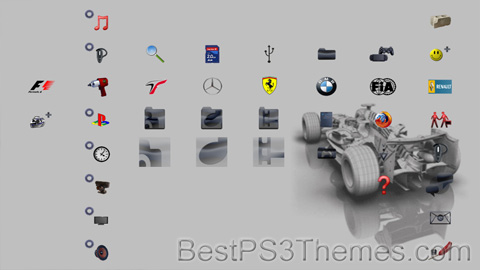
(1 background)
Lamborghini
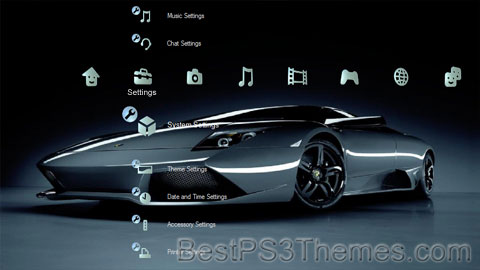
(3 backgrounds)
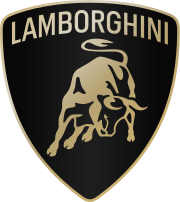
![]()

Company type Subsidiary Industry Automotive Founded 1963 Founder Ferruccio Lamborghini Headquarters , 135 dealerships Worldwide Stephan Winkelmann (CEO)[1] ![]() 9,233 vehicles (2022)[2]
9,233 vehicles (2022)[2]Revenue ![]() €2.38 billion (2022)[3]
€2.38 billion (2022)[3]![]() €614 million
€614 million![]() €10.1 million (2014)[3]
€10.1 million (2014)[3]Total equity ![]() €1.832 billion (2014)[3]
€1.832 billion (2014)[3]1,779 (December 2020)[4] Parent Audi AG Subsidiaries Ducati Motor Holding S.p.A.
Italdesign GiugiaroWebsite lamborghini.com History[edit]

Years
Owner
1963–1972
Ferruccio Lamborghini
1972–1977
Georges-Henri Rossetti and René Leimer
1977–1984
Receivership
1984–1987
Patrick Mimran
1987–1994
Chrysler Corporation
1994–1995
MegaTech
1995–1998
V'Power and Mycom Sedtco
1998–present
Audi AG
Products[edit]
Automobiles[edit]
Models in production[edit]



Marine engines[edit]
Lamborghini motorcycle[edit]
Branded merchandise[edit]
Motorsport[edit]

Squadra Corse Company type Subsidiary Industry
Headquarters Worldwide
Owner Automobili Lamborghini Parent Audi AG Website lamborghini Automobiles produced[edit]
GT3 and Super Trofeo Cars[edit]
Special cars[edit]
Events held[edit]
Lamborghini Super Trofeo[edit]
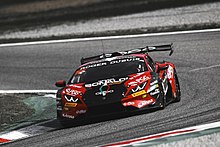
Lamborghini GT3[edit]

Current factory drivers[edit]
Factory drivers[18][edit]
GT3 junior drivers[19][edit]
![]() Jack Bartholomew
Jack Bartholomew![]() Glenn van Berlo
Glenn van Berlo![]() Riccardo Cazzaniga
Riccardo Cazzaniga![]() Pierre-Louis Chovet
Pierre-Louis Chovet![]() Jaden Conwright
Jaden Conwright![]() Alessio Deledda
Alessio Deledda![]()
Ram
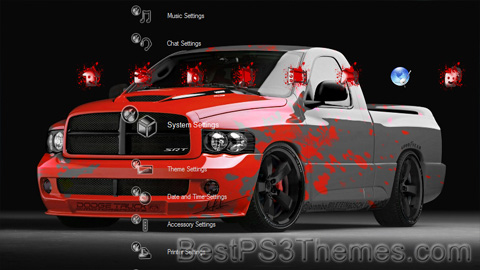
(1 background)
Animals[edit]
People[edit]
Religion[edit]
Places[edit]
Arts, entertainment, and media[edit]
Organizations[edit]
Museums[edit]
Other organizations[edit]
Astrology[edit]
Science and technology[edit]
Computing[edit]
Military[edit]
Other uses in science and technology[edit]
Other uses[edit]
See also[edit]
Lambo Blu

(1 background)
Copyright (c) 2007. Anoop Menon
p3textractor filename.p3t [destination path]Replace filename with the name of the p3t file, and replace [destination path] with the name of the folder you want the files to be extracted to. A destination path is not required. By default it will extract to extracted.filename.NFS Carbon XMB Style

(3 backgrounds)
Copyright (c) 2007. Anoop Menon
p3textractor filename.p3t [destination path]Replace filename with the name of the p3t file, and replace [destination path] with the name of the folder you want the files to be extracted to. A destination path is not required. By default it will extract to extracted.filename.